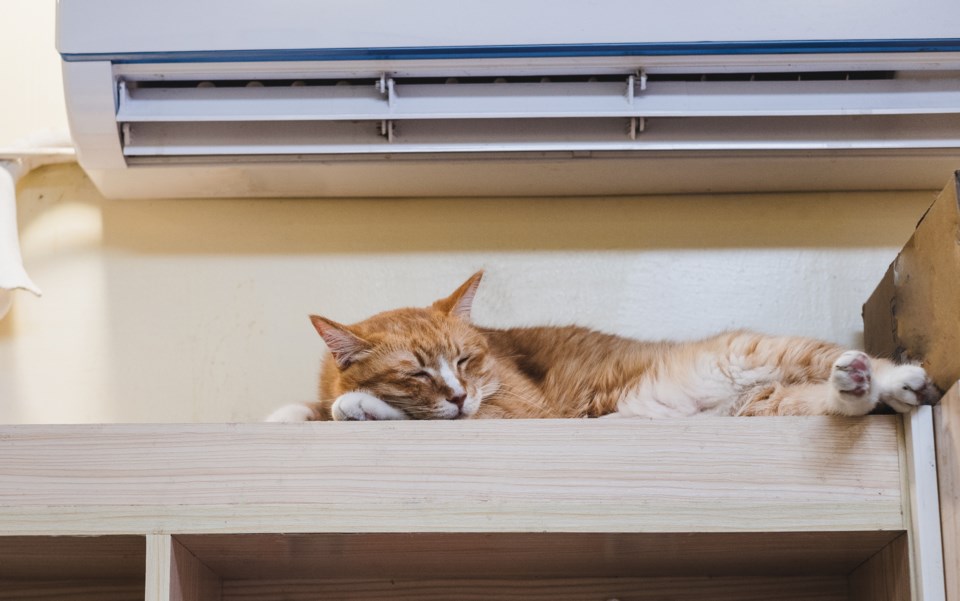Fostering pets can give animals a chance to flourish before they’re sent to their forever homes. According to data gathered by , 6.5 million cats and dogs enter shelters every year. Many of these shelters can’t house all of the animals they receive and, thus, rely on foster pet parents to fill in those gaps.
Fostering a pet for the first time can be an exciting and rewarding experience, but also intimidating if you’re not sure what to expect. compiled a list of 10 tips for first-time foster pet parents to help their foster pets feel happy and safe.
Foster pet parents are given the opportunity to care for, love, and, in some cases, help find a permanent home for pets that a shelter is unable to house. While some shelters will pay for some expenses, foster pet parents may have to cover some of the costs associated with raising a cat or dog.
Foster pet parents are also responsible for making sure the pets in their care are comfortable and providing feedback to a shelter regarding their personalities and stressors so the shelter can find the best forever home matches.
Here’s what you need to know about fostering a pet for the first time.

Julia Zavalishina // Shutterstock
Consider the time commitment
Before agreeing to foster, critically evaluate whether you truly can give your foster pet the time commitment they need and deserve. If a pet is in foster care, they may require a big-time commitment, depending on the type of animal or breed. For example, dogs tend to need more thorough supervision, whereas cats are typically much more independent.
If you have a busy schedule or job that requires you to be on-site, fostering isn’t impossible, but you’ll need to make accommodations for your foster pet such as hiring a dog walker or returning home on your breaks to let them outside.
Adult dogs typically need to be let outside at least three times a day, while adult cats need to have their litter boxes scooped at least twice per day, according to the . If you travel a lot or frequently work overtime hours, being a foster pet parent may not be a good fit for you.

Sozina Kseniia // Shutterstock
Survey your home for safety
For the safety of your foster pet, before bringing them into your home, do a thorough survey to see if there are any potentially dangerous substances or items. For example, do you have any plants that are toxic? Are there cables lying around that could be chewed? Would a foster pet be able to easily access any dangerous chemicals in your home such as antifreeze?
According to the , common household items such as drain cleaner, laundry detergent, chocolate, sugar-free gum, and pain relievers can be toxic to pets. Properly store away any potentially dangerous foods or chemicals in your home. Just because it’s not poisonous to you, doesn't mean it won’t be deadly to your foster pet.

nataliajakubcova // Shutterstock
Mitigate stress factors
During the early stages of your experience, everything to a new foster pet may seem stressful because it’s in a new, unfamiliar environment. Over time, however, you’ll get to know your foster pet and what sort of stressors they may have. Pay attention to this so you can help make them as comfortable as possible in your home and prepare their eventual forever home pet parents.
Separation anxiety, one common stressor among dogs, is essentially a panic attack, according to , a zoologist and certified applied animal behaviourist, and author of, “I’ll Be Home Soon.” Other common points of stress may be a fear of loud noises, anxiety around other animals, or not liking humans of a specific gender.

Zivica Kerkez // Shutterstock
Communicate thoroughly with the foster coordinator
Communicating with the foster coordinator or the shelter you’re fostering with will be key to setting yourself up for success when becoming a first-time foster pet parent. The foster coordinator supports you through the process and should provide you with the appropriate information you need to know about your first pet.
Be sure to ask detailed questions, such as what kinds of foods your foster pet can and can’t eat or any other issues it might have. Throughout your first foster’s stay, if you come across any challenges or questions, be sure to communicate those with your foster coordinator who can help you figure out the next steps.
Any challenges or discoveries you find with your first foster pet that you communicate with your coordinator can also help the shelter figure out the best home situation for that pet.

zkolra // Shutterstock
Budget for expenses
While most shelters will cover some expenses associated with fostering a pet, such as vet fees, you may need to shell out your own dollars for basic items. Before agreeing to foster a pet for the first time, make sure you have room in your budget to cover expenses like toys, grooming, training, or other services the shelter may not cover.
If you’re preparing to bring a dog into your home, suggests gathering items such as a leash, collar, crate, toys, and food and water bowls in case the shelter you’re working with doesn’t provide these items.
When fostering a cat, you may want to purchase toys, food and water bowls, and a litter box. Having these items ready for your foster pet can help make them feel more comfortable in your home and make you feel more prepared.

Kucher Serhii // Shutterstock
Accommodate other pets or children
Other pets and children, depending on their ages, can be stressful to a foster pet in a new environment, especially if they are not used to sharing a space with either. Communicate with your foster coordinator regarding all the humans and pets in your household to avoid placing your first foster pet in an unsuitable environment.
Aside from that, if you have a foster pet coming from an animal shelter or hospital, you’ll want to make sure that if they are sick with anything, it doesn’t get passed to your other pets.
recommends keeping your new foster and other pets apart for at least two weeks before letting them physically interact. When your pets do meet, introduce them in an area that could be considered neutral, such as a park.

TeamDAF / Shutterstock
Opt for a pet without behavioral or health issues
If this is your first time being a foster pet parent, expect it to take time to find your footing. This isn’t to say that you can’t or shouldn’t take in a pet with behavioral or health issues.
But, if you’re just getting your feet wet when it comes to fostering, you may want to start on the shallow side of the pool as opposed to diving headfirst. You’ll want to feel out the parameters and easily be able to make adjustments to your schedule or home if needed.
It may also be a good idea to avoid a needy foster pet at first as you may not be well suited or in the position to provide for a pet with extra needs. This could put both you and the foster pet in an unfair situation if you find that you’re not able to provide what they need.

Roman Pyshchyk // Shutterstock
Consider how much space you have
Before applying to foster a pet for the first time, carefully consider whether you have the space to comfortably share your home. The size of your home can quickly become an issue when fostering a pet, especially if you’re fostering a large or energetic dog that requires lots of space.
Aside from that, you’ll need room for supplies such as a crate, toys, a bed, or a litter box. Keep in mind that if you live in a small apartment with no access to a backyard, it’s likely that a shelter would not accept your application to foster a dog. Though, you may be allowed to foster a cat.

Tara Lynn and Co // Shutterstock
Work on obedience training
One important thing to work on with your first foster pet is obedience training. According to , positive reinforcement emphasizes the use of rewards and praise when a dog performs an appropriate behavior. The dog will associate that behavior with a positive outcome, increasing the chance that they will repeat it.
Working with your foster pet on basics such as housetraining, and “sit,” “come,” and “stay” commands can help prepare them for a smoother transition to their soon-to-be forever home. Treats and praise can help reinforce this behavior, leading to a more confident pet.

K.K.T Madhusanka // Shutterstock
Emotionally prepare for when they find a new home
Your home is a transitory stop on your foster pet’s journey to finding a forever home. It’s your job to give them a comfortable place to stay and set them up for success when they eventually get adopted. Letting go can be hard, so you’ll want to emotionally prepare yourself ahead of time. When it’s time for your first foster pet to leave, you may also feel a sense of pride at seeing their progress.
Some foster pet parents end up wanting to adopt their foster pets. In this case, you’ll typically need to talk with your foster coordinator and formally apply to adopt your foster pet.
This story originally appeared on ManyPets and was produced and distributed in partnership with Stacker Studio.




